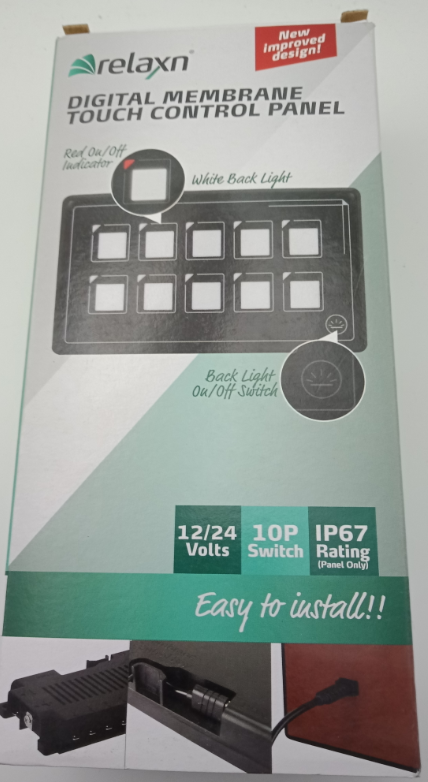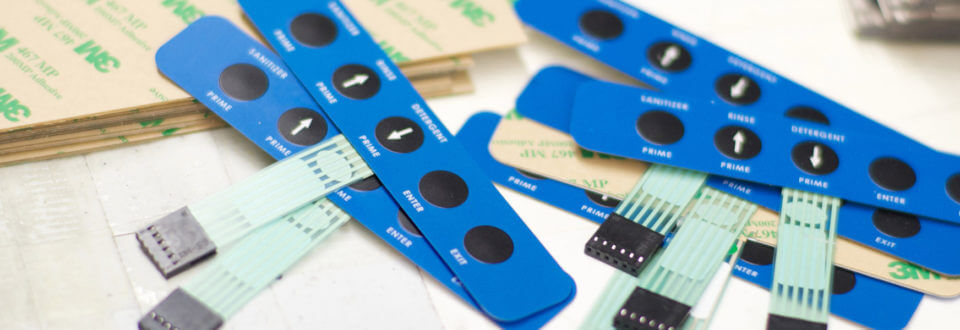The Role of Membrane Switch Technology in Improving Product Interfaces
The Role of Membrane Switch Technology in Improving Product Interfaces
Blog Article
Recognizing Membrane Layer Changes: The Key to Durable and Reputable Controls
Membrane changes stand for an important aspect of contemporary user interface design, mixing functionality with durability in numerous applications. As we explore the ins and outs of membrane layer switches, it ends up being clear that their duty in improving control systems is both complicated and extensive, raising questions regarding just how best to take advantage of their abilities in future innovations.
What Are Membrane Switches?
Membrane layer buttons are an innovative solution in the realm of interface modern technology, incorporating functionality and style effortlessly. These tools function as a user interface between users and electronic systems, integrating a number of elements right into a small layout. Generally built from versatile, slim layers of products, membrane layer buttons are made to reply to touch, enabling users to interact with machinery and electronic devices efficiently.
The main aspects of a membrane switch consist of a printed circuit layer, graphic overlay, and a spacer layer that avoids unexpected activation. The visuals overlay can be personalized to mirror brand name identification or customer choices, improving visual appeals while guaranteeing usability. Membrane switches are frequently used in numerous applications, including clinical devices, consumer electronic devices, and commercial tools, owing to their resilience and resistance to environmental factors such as dampness and dirt.
One of the key benefits of membrane layer switches is their capacity to endure deterioration, making them perfect for high-traffic environments. In addition, they are light-weight and require marginal area, permitting innovative layouts in item development. Generally, membrane layer changes represent a efficient and sensible option for modern digital interfaces, weding technology with user-centric layout principles.

Exactly How Membrane Switches Work
The operation of membrane switches over hinges on a simple yet reliable system that translates customer input right into electronic signals. When a user presses the button, the leading layer deforms, allowing a conductive aspect in the circuit layer to make contact with a corresponding conductive pad on the bottom of the graphic overlay.
The design of membrane layer buttons can differ, yet they typically integrate domes or responsive elements to provide feedback to the customer, boosting the general experience. The products utilized in membrane layer buttons, such as polyester or polycarbonate, contribute to their resilience and resistance to environmental aspects, including wetness and dirt. The published circuits are usually enveloped, which protects them from wear and tear over time.

Benefits of Membrane Buttons
Among the key benefits of membrane buttons is their flexibility in design, permitting them to be personalized to meet certain user demands and aesthetic needs. This versatility encompasses numerous markets, where various shapes, dimensions, and colors can be used to improve customer interaction and aesthetic charm.
In addition, membrane buttons are known for their durability. Built from durable materials, they are immune to dust, dampness, and physical wear, which considerably expands their life expectancy contrasted to conventional mechanical buttons. This resilience makes them particularly appropriate for high-traffic settings and applications requiring long life.

Additionally, membrane buttons provide a structured profile, leading to a thinner layout that can be integrated right into different tools without including mass. This function not only improves the aesthetic charm but likewise adds to an extra ergonomic product layout.

Applications of Membrane Buttons
Easy to use and flexible, membrane buttons locate applications throughout a vast range of sectors, including clinical gadgets, customer electronics, and industrial devices. In the clinical field, these buttons are indispensable to gadgets such as analysis devices, patient surveillance systems, and infusion pumps, where reliability and simplicity of cleaning are critical. Their ability to endure extreme environments and preserve functionality makes them perfect for such applications.
In customer electronics, membrane buttons are used in products like microwaves, washing devices, and push-button controls - membrane switch. Their smooth layout allows for intuitive user interfaces, improving the general individual experience while offering toughness and resistance to deterioration
Commercial tools additionally takes advantage of membrane switches, especially in control panels for machinery and automation systems. These switches offer defense versus dirt and wetness, making sure constant performance in challenging environments. Their customizable features permit makers to tailor them to specific functional requirements, improving efficiency and capability.
Selecting the Right Membrane Switch
When picking a membrane button, it is discover here vital to consider different factors that affect performance and viability for specific applications. The main factors to consider include ecological conditions, responsive comments, resilience, and layout specifications.
First, evaluate the operating atmosphere; switches exposed to dampness, chemicals, or extreme temperature levels require certain products to guarantee long life and functionality. Next, review the need for tactile responses. Depending on user communication, some applications might take advantage of a tactile action to validate activation, while others may choose a non-tactile style for visual factors.
Sturdiness is an additional crucial element; membrane layer buttons should be developed to stand up to constant usage, influences, and abrasion. Make certain the picked button can sustain the expected lifecycle, particularly in high-usage situations.
Final Thought
In verdict, membrane layer switches work as important elements in the style of reliable and resilient control systems across various industries. Their compact design, combined with robust construction and customizable features, enhances customer communication while making certain long life popular atmospheres. The adaptability of membrane layer changes allows for tailored solutions that fulfill details functional requirements, strengthening their importance in modern innovation. membrane switch. As sectors proceed to develop, the significance of incorporating reliable membrane switch solutions can not be overemphasized.
Membrane switches over represent an important element of modern user interface design, mixing functionality with strength in different applications.Membrane switches are a sophisticated option in the realm of customer interface innovation, incorporating performance and design flawlessly. Usually constructed from versatile, thin layers of look these up products, membrane layer buttons are designed to respond to touch, enabling users to interact with machinery and digital tools successfully.
The layout of membrane switches can differ, but they typically include domes or tactile aspects to give feedback to the user, improving the site total experience.In conclusion, membrane layer switches offer as important elements in the layout of reputable and sturdy control systems across various markets.
Report this page